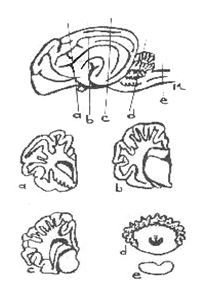Neurologic disease
![]()
A. Rabies, BSE, CWD, Scrapie
If rabies, BSE, CWD, or scrapie is suspected, you must contact your local Canadian Food Inspection Agency District Office immediately and submit according to their instructions.
If a reportable disease is included in the differential diagnosis list but is not strongly suspected, consult your local CFIA District Veterinarian regarding your options before submitting the carcass or the brain/head to the AHL for diagnosis.
If BSE, CWD, or scrapie is suspected, you must contact your local CFIA office and submit samples according to their instructions. If these diseases are included in the differential diagnosis but are not strongly suspected, consult your local CFIA District Veterinarian regarding your options before submitting the brain or head to the AHL for diagnosis. If Rabies is suspected - and if there is any human exposure contact your local Public Health office, or if only animal exposure contact OMAFA (1 877 424-1300).
B. Other neurologic disease
In cases of other neurologic diseases, please submit a complete history with as much neurologic examination details as possible; localizing signs, such as PLR, blindness, circling or head tilt, may be useful. Please include full vaccination history.
PLEASE INCLUDE FULL VACCINATION HISTORY.
Submission of the entire carcass/remains may be preferable, if possible, as systemic disease can present with neurologic signs. If submitting the entire carcass/remains, please DO NOT FREEZE. Freezing has an adverse impact on histopathology of brain and nervous tissue.
Brain removal and submission:
Link to LabNote 33 – Brain removal in field postmortems
Use appropriate PPE when removing brain.
- If not removing brain prior to submission, the head may be submitted intact for brain removal and sampling at the AHL.
- After removing the calvaria from the skull, take a meningeal swab for culture (preferably from the base of the brain).
- Cut brain in half lengthwise and submit half of the brain fresh, in a separate Whirl-Pak bag.
- Fix the other half of the brain in formalin. For large brains (e.g. from food animals, horses, etc.), fix for 24 h, and ship in formalin-soaked paper towels. Alternatively, and in the absence of gross lesions, submit a minimum of 1 section from each area listed below (1 cm thick slices).
- Submit meningeal swabs and formalin-fixed tissues to AHL.
- Serology: EHV-1, WNV, EEEV, Toxoplasma, EPM/Sarcocystis neurona
- Molecular Biology: Toxpoplasma gondii PCR
|
|
|





